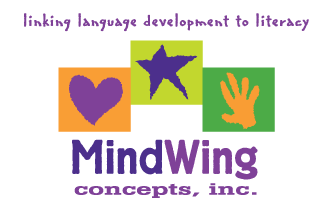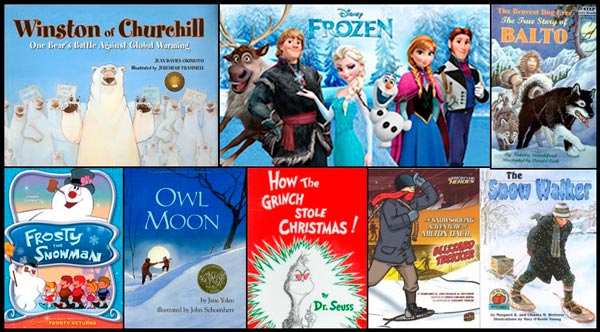Secure Checkout. FREE SHIPPING for Continental U.S. Orders over $60.
Menu
-
- Home
-
About Us
-
The Approach
-
Linking Language & Literacy
-
MindWing Learning
-
Learning Resources
-
SHOP
-
Blog
-
- About MindWing
- Our People
- Contact Us
- Your Account
- Login
-
United States (USD $)

Secure Checkout. FREE SHIPPING for Continental U.S. Orders over $60.

Aligning SGM® with The Zones of Regulation, and Tech-Tie-Ins!
December 15, 2015 1 Comment
 This month we will discuss the acclaimed Zones of Regulation® program and dovetailing with narrative instruction through Story Grammar Marker®. All students must develop self-regulation skills for living and learning, an area defined by author Leah Kuypers as “the best state of alertness of both the body and emotions for the specific situation” (Kuypers, 2011). However, students with language-learning disorders and autism spectrum and related disorders can exhibit more significant struggles with managing their mind and body given their communication needs, as well as other factors such as sensory processing...
This month we will discuss the acclaimed Zones of Regulation® program and dovetailing with narrative instruction through Story Grammar Marker®. All students must develop self-regulation skills for living and learning, an area defined by author Leah Kuypers as “the best state of alertness of both the body and emotions for the specific situation” (Kuypers, 2011). However, students with language-learning disorders and autism spectrum and related disorders can exhibit more significant struggles with managing their mind and body given their communication needs, as well as other factors such as sensory processing...

Reading Lessons and Blogs About the Winter Season
December 08, 2015
 We recently posted a blog using the SGM® Setting Map with the four seasons:
We recently posted a blog using the SGM® Setting Map with the four seasons:
With the official first day of the winter season right around the corner, check out some of these blogs and lessons that you may want to use with your students!

Adobe Voice gives “Voice” to Narrative or Expository Language
October 13, 2015
 It’s Technology Tuesday, and this month we will cover a simple, free tool to practice combining visuals and oral narration to produce an engaging video! A main goal of using MindWing’s Story Grammar Marker® and ThemeMaker® tools is to provide structure for oral discourse. Narrative or expository maps provide a “plan” for the elements of discourse, along with key words to help students connect their thoughts when formulating a story or explanation. In this way, a culminating activity of using any language map can involve asking students to “connect the dots” in formulating a complete story or using expository language. Adobe Voice, a free, easy-to-use app, provides a fast and motivating way to do this!...
It’s Technology Tuesday, and this month we will cover a simple, free tool to practice combining visuals and oral narration to produce an engaging video! A main goal of using MindWing’s Story Grammar Marker® and ThemeMaker® tools is to provide structure for oral discourse. Narrative or expository maps provide a “plan” for the elements of discourse, along with key words to help students connect their thoughts when formulating a story or explanation. In this way, a culminating activity of using any language map can involve asking students to “connect the dots” in formulating a complete story or using expository language. Adobe Voice, a free, easy-to-use app, provides a fast and motivating way to do this!...

Create Visual “Explanimations” to go with your Expository Lessons
September 15, 2015

Bring EPIC Contexts to Your Use of Story Grammar Marker®
August 18, 2015

As they are contextual tools, it’s important to consider context when developing narrative and expository language with SGM® and Thememaker®, respectively. Picture books naturally make terrific contexts to work on narrative at a range of developmental stages and teach identification and use of expository text structures. This summer, while you are away from your school libraries, you can check out the gold mine of contexts that is the EPIC! Unlimited Books for Kids app (free for iPad). When you launch the app, sign up for an educator account (also free) and you will have access to an amazing library of picture and chapter books from leading publishers such as Harper Collins, National Geographic and MacMillan. As the app claims to be, “it’s like a Netflix for children’s books!”...
Technology Tuesday: Vocabulary, Summer Programming, and Story Grammar Marker®!
June 09, 2015 2 Comments
 Some years ago as an SLP in the elementary school setting, I was informed by a colleague of Isabel Beck’s revolutionary approach to targeting vocabulary. In the book Bringing Words to Life: Robust Vocabulary Development, co-written with Margaret McKeown and Linda Kucan, the authors describe a methodology for building vocabulary revolving around key principles...
Some years ago as an SLP in the elementary school setting, I was informed by a colleague of Isabel Beck’s revolutionary approach to targeting vocabulary. In the book Bringing Words to Life: Robust Vocabulary Development, co-written with Margaret McKeown and Linda Kucan, the authors describe a methodology for building vocabulary revolving around key principles...
